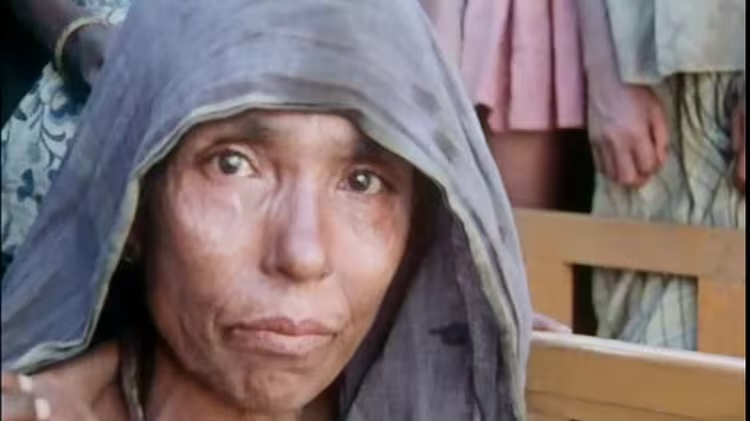

The plight of the Bangladeshi during the horrors of the famine.
“I and other reporters have helped to immunise people against Bangladesh by reporting their horrors year after year. But I do ask you to watch this film, because I believe that possibly the greatest famine in recorded history has now begun here, with tens of thousands of people already dead and dying and suffering.”
John Pilger reported from East Pakistan for the Daily Mirror in 1970 on a cyclone that killed up to one million people and, a year later, on the civil war that led to its independence as Bangladesh. His dispatches emphasised that Western governments did not wish to upset Pakistan’s ruling generals, so their relief efforts were derisory.
In 1974, when famine hit the country, Pilger returned to Bangladesh to make An Unfashionable Tragedy. It contains harrowing scenes of starving children but also puts the horrors into a geopolitical context. This is Pilger’s first documentary to highlight his theme of expendability, whereby countries with no oil, strategic value or military power are considered unimportant to the superpowers. Bangladesh, he points out, is not one of the United States’s “client states” on a priority list to receive its surplus food.
Standing in a cemetery, he reports that 10,000 famine victims have been buried there over the previous six months, many who simply needed milk to survive. In one village, he finds everyone starving and, in exchange for food, some women have sold their clothes and farmers have sold their land. With just £63 million in relief from the EEC, Pilger talks of “the world’s culpable neglect of this ravaged country”.
The screening of An Unfashionable Tragedy led to £30,000 in unsolicited donations being sent to ATV – an early example of the effect that Pilger’s documentaries could have.
An Unfashionable Tragedy (Pilger, ATV), ITV, 2 January 1975
Producer-director: John Ingram (28 mins)


